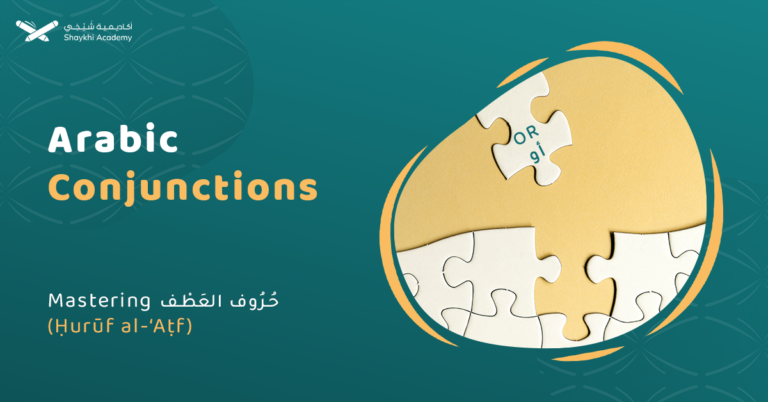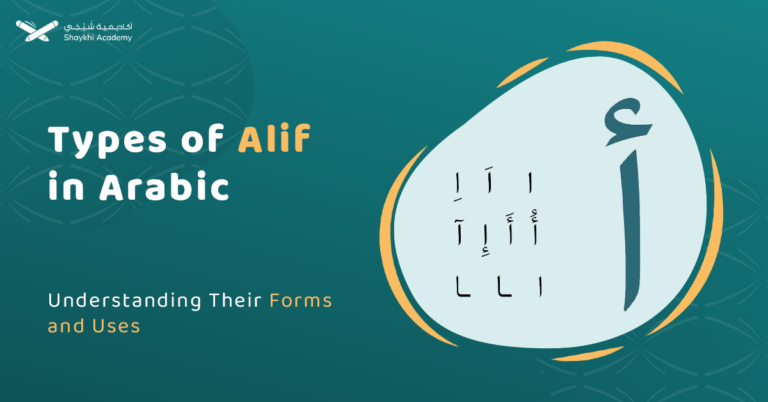Arabic sentences may be one of two types. These include verbal sentences and nominal sentences. A Verbal sentence in Arabic, starts with a verb that is followed by a subject and then an object. While nominal sentences are composed of a noun (subject) and a predicate.
In this article. We will discuss the verbal sentence in Arabic, its structure, its components, and how it differs from nominal sentences, with examples and practical exercises that will help you master this important topic
Verbal Sentence In Arabic
A verbal sentence (الجُمْلَةُ الفِعْلِيَّة) in Arabic begins with a verb (فِعْل) in one of the three tenses (present, past, or imperative). The verb is followed by the subject (فَاعِل). In some cases the subject is not mentioned, however, it is referred to within the verb itself. Verbal sentences may also include an object (مَفْعُول به), an adverbial structures or a prepositional phrase.
A verbal sentence is complete only with a verb and a subject in case the verb is intransitive. which means it does not require a direct object, e.g
(Bilal went – ذَهَبَ بِلَالٌ – dhahaba Bilal) , and (The child laughed – ضَحِكَ الطِّفْلُ – dahika at-tiflu).
But if the verb is transitive then it requires an object to complete the meaning of the verbal sentence. So, in this case, the orser of the verbal sentence is, verb + subject + object.

Transitive and Intransitive Arabic Verbs
In Arabic, transitive verbs are verbs that have direct objects. These are known as “الأفْعَالُ المُتَعَدِية – Al-af’al al-mota’adiya”.
For example:
| Object | Subject | Verb | Sentence |
| الطَّعَامَ | مُحَمَّدٌ | أَكَلَ | أَكَلَ مُحَمَّدٌ الطَّعَامَMohammed ate the food |
Note that some Arabic verbs have more than one object depending, these verbs are inown as (الفعل المتعدي لمفعولين – Al-fi’l Al-mota’addi limaf’oolayn).
Example:
أَعْطَى الْمُعَلِّمُ مُحَمَّدًا هَدِيَّ
The teacher gave Mohammad a present.
On the other hand, some Arabic verbs are known as in-transitive verbs (الأفْعَالُ اللازِمَة – Al-af’alu al-lazemah). These verbs do not have direct objects.
For example:
| Object | Subject | Verb | Sentence |
| ——- | المُعَلِّمُ | جَاءَ | جاء المُعَلِّمُ إِلَى الْفَصْلِThe teacher came to the classroom |
Verbal Sentence in Arabic With Examples
| Verbal Sentence | Transliteration | Translation | Verbالْفِعْلُ | Subjectالْفَاعِل | Objectالمفعول به |
| كَسَرَ الطِّفْلُ الْقَلَمَ | kasara al-tiflu al-qalama | The child broke the pen | كَسَرَ | الطِّفْلُ | القَلَمَ |
| سأَلَ الْوَلَدُ أُمَّهُ | Sa’ala al-waladu ummahu | The boy asked his mother | سَأَلَ | الْوَلَدُ | أُمَّ |
| رأيْتُ السيَّارَة | Ra’aytu As-sayara | I saw the car | رأى | The subject here is the attached pronoun” ت” | السَّيارةَ |
Rules of Arabic Verbal Sentences
Now, that you have mastered the structure of verbal sentences, here are some important verbal sentence rules that should be noted:
The Order of Verbal Sentences
Unlike English where the subject comes prior to the verb, the Arabic verbal sentences start with the verb, followed by the subject, and then the object.
Arabic Verbal Sentences Cases
In Arabic verbal sentences, the fa’il (فَاعِل – subject) is in the nominative case (Marfoo’ – مَرْفُوع), while the maf’ul (مَفْعُول به – object) is in the accusative case (mansoub – مَنْصُوب).
Arabic Verb Subject Agreement
In Arabic verbal sentences, the finite verb does not necessarily agree in gender and number with the subject following it.
Hence, when forming Arabic verbal sentences the following points should be noted:
- Before sound Plurals, Duals, & sometimes before broken Plurals, which denote male beings, the verb stands for the most part in the Masuline Singular form.
- Before broken Plurals, especially those that do not imply male living beings, the verb comes in the Feminine Singular form.
In other words, in Arabic verbal sentences, where the verb comes before the subject, verbs only agree with the subject in terms of gender, however, they remain singular,
For Example:
يذهب الطلاب إلى الجامعة.
“Students (masc.) go to university.”
يذهب الطالبان إلى الجامعة.
“Students (dual, masc.) go to university.”
تدهب الطالبات إلى الجامعة.
“Students (fem.) go to university.”
It is worth mentioning that this rule is not influenced by the tense of the sentence, i.e. it involves any verb and subject regardless of their tense.
Now, can you begin the sentences below with the verb and correctly apply the Arabic verb-subject agreement rule??
الأولاد لعبوا في الحديقة.
البنات لعبن في الحديقة.
Arabic Verbal Sentence Tenses
Arabic verbal sentences can come in one of three different tenses, which are the present, the past and the imperative tense. In addition to that they may be in the passive voice. Let us explore the different tenses of Arabic verbal sentences with examples on each.
1. Arabic Present Tense
Arabic verbal sentences can be in the present tense (zaman Al modare’ – زمــن الــمــُــضـــارع) if they are starting with a verb is in the present tense.
Example:
يَشْرَبُ الطِفْلُ الْحَلِيب
The child drinks the milk.
2. Arabic Past Tense
Arabic verbal sentences can be in the past tense (زمــن الماضي – zaman al madi) if they are starting with a verb is in the past tense.
Example:
شَرِبَ الطِّفْلُ الْحَلِيبَ
The child drank the milk.
3. Arabic Imperative Mood
Arabic verbal sentences can be in the imperative mood( صــيــغــة الأمــر ), if they start with an imperative verb (فـعــل أمــر).
Example:
احفظ الدَّرْسَ
Memorize the lesson
4. Verbal Sentences in the Passive voice
Arabic verbal sentences can also be in the passive voice ( المَبْني للمَجْهُول) if the verb is in the passive form (فًعْلٌ مَبْنِي للمَجْهُول).
Example:
كُتِبَ الدَّرس
The lesson was written
What Are The Differences Between Arabic Verbal and Nominal Sentences?
The difference between Arabic verbal and the nominal sentences is that verbal sentences relate to an act or an event.
Whereas nominal sentences give a description of a person or a thing, and get the subject into focus, they often lay emphasis on the subject.
Verbal sentences can be converted into nominal ones by switching the place of the verb and the subject, as follows:
Example
خَلَقَ اللهُ الكَوْنَ
Allah created the universe
This is a verbal sentence that focuses on the verb “خَلَقَ”.
However, if the focus is to be laid on the subject, that no one else but Allah has created the universe, then a nominal sentence should be used.
Example
اللهُ خَلَقَ الكَوْنَ
Which literally mean, ‘Allah, He created the Universe‘
Practice Exercises on verbal sentences in Arabic
Now, it is time to test your knowledge!
Sort the verb, subject, and object out of the following Arabic verbal sentences. Feel free to send us your answers and receive feedback!
| Sentence | Verb | Subject | Object |
| قَرَأَ التِّلْمِيذُ القِصَّةَ | …………… | ………… | …………… |
| أَحْرَزَ اللاعِبُ هَدَفًا | ……………. | ………….. | …………. |
| ذَهَبَ عَلِيٌّ إِلَى الْمَدْرَسَة | …………… | …………… | …………… |
Master Arabic with Shaykhi Academy: Your Gateway to Fluency!
Are you eager to learn Arabic from the comfort of your home? Shaykhi Academy offers you the perfect opportunity to master Arabic, whether for Quranic studies, daily communication, or advanced understanding.
Why Shaykhi Academy?
- Expert Native Tutors: Learn from highly qualified native Arabic speakers.
- Flexible Scheduling: Tailor your classes to fit your busy life.
- Affordable Learning: Access top-quality education at a price that suits you.
- Global Access: Study from anywhere in the world.
Explore Our Arabic Courses:
- Noorani Qaida: Build a strong foundation in Quranic Arabic.
- Comprehensive Arabic Courses: Master the Arabic language, from beginner to advanced levels.
- Fusha Arabic Classes: Delve into Modern Standard Arabic, the key to understanding literature, media, and formal communication across the Arab world.
- Quranic Arabic Course: Enhance your connection with the Quran by learning the language in which it was revealed.
Start Your Arabic Journey Today! Whether you’re just starting or looking to deepen your knowledge, Shaykhi Academy is here to support your journey. Book your free trial now and begin your path to Arabic mastery!
To Sum Up!
Learning how to form a verbal sentence in Arabic is absolutely essential for you if you aim at mastering the language. In this article we discussed the main parts of the Arabic verbal sentence including the verb, subject and object. In addition to the most important rules related to the verbal sentences.
Join Shaykhi Academy’s online Arabic classes to learn more about the language and easily achieve proficiency from your home!















































